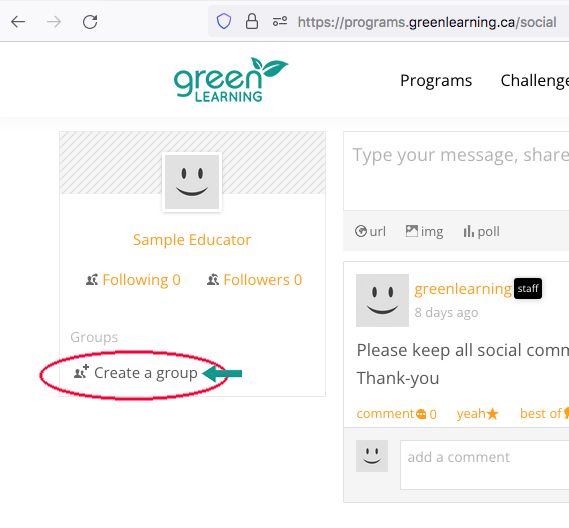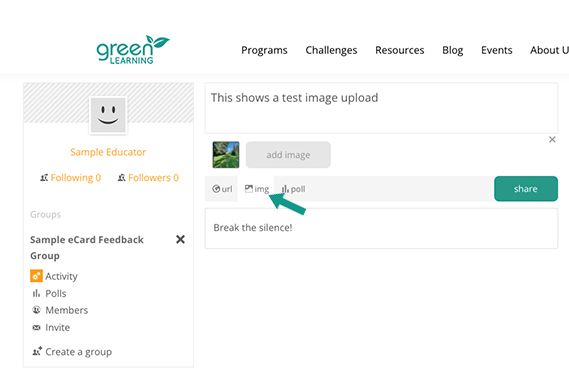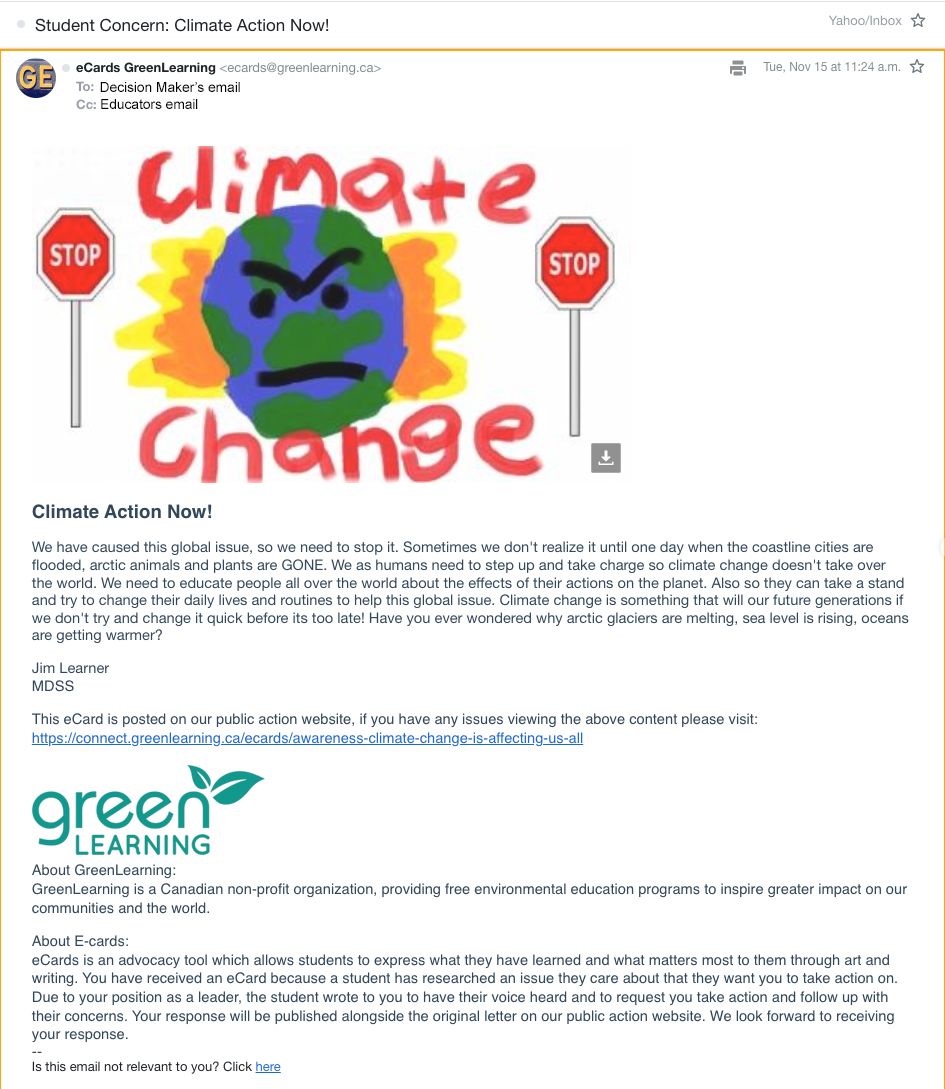2014 Re-Energy Solar Oven
Challenge Submission Showcase
From hot dogs to s'mores, students from Alberta to Nova Scotia designed, built and tested an array of creative solar oven models. Sharing their learning (and treats) with their community was a common theme this year!
Consort School, Grade 4
Consort, Alberta
On Friday, April 4th, eleven Grade Four students and their teacher at Consort School worked in pairs to build six solar ovens following the instructions at re-energy.ca. We created our baking chambers by placing oven thermometers on top of cookie sheets on top of black ceramic tiles inside oven bags and sealing each bag. Next, we set up our solar ovens on the tarmac outside our school. Within thirty minutes, every thermometer read at least 150 degrees Fahrenheit. The solar oven with the reflective panels arranged more upright in the box reached 180 degrees Fahrenheit. We decided to bake while the sun shone. The only differences between the six solar ovens was the size of the box with the flaps and the amount of shredded paper used for insulation in the box. After discussing how we might be able to get our solar ovens hotter, we decided to try using black roasting pans instead of glass.
On April 4th, four groups baked a sheet of chocolate chip cookies using Pillsbury cookie dough. Most students ended up angling their cookie sheets at quite a steep slope in the opening where the reflective panels met. Even though the dough slid to the bottom of the sheet, by 2 pm, three of the four groups had properly baked cookies. The dough was still raw in one solar oven as the pair of operators had more difficulty regularly checking the set up throughout the afternoon. Two groups tried baking brownies. Again, the pans were angled at quite a steep slope. The brownies baked unevenly. Only the thinner parts of the dough baked well. On April 30th, all groups cooked hot dogs. Three groups also baked brown beans.
On April 4th, four groups baked a sheet of chocolate chip cookies using Pillsbury cookie dough. Most students ended up angling their cookie sheets at quite a steep slope in the opening where the reflective panels met. Even though the dough slid to the bottom of the sheet, by 2 pm, three of the four groups had properly baked cookies. The dough was still raw in one solar oven as the pair of operators had more difficulty regularly checking the set up throughout the afternoon. Two groups tried baking brownies. Again, the pans were angled at quite a steep slope. The brownies baked unevenly. Only the thinner parts of the dough baked well. On April 30th, all groups cooked hot dogs. Three groups also baked brown beans.
Students were highly engaged when building their solar ovens.The level of cooperation was outstanding as partners worked together to lay down lengths of tinfoil as flat as possible. Everyone was really excited when the ovens heated up so quickly during testing. They were proud when all the grade fives and sixes were so curious about how the cookies and brownies were baking. The cookies were delicious. Many students saved a cookie to share with someone special at home or in another class. On April 30th, we stayed outside all morning. We used the playground equipment as our desks and worked on reading and math when we weren't busy regularly checking, adjusting, and improving our solar ovens. Students helped each other figure out ways to "beat the wind" and to try to make our ovens hotter. When the hot dogs and beans were cooked, students enjoyed a feast in our classroom.
Write your awesome label here.
Write your awesome label here.
H.E. Bourgoin Middle School
Bonnyville, Alberta
We tasked the kids with using items found around their homes to create solar ovens that would be able to be used if they went camping and needed to cook. The items they were not allowed to use were duct tape and glass. any other material as long as it could come in bulk was fair game to add to their design.
We will be offering a mini BBQ at the end of the year (weather permitting) where the students ovens will be the ovens in order to feed the school. Will see how effective their design were and if they were practical to be using in the world today.
As the students were building I really saw a great sense of cooperation being created. Since most of these students are in different classes and grade they really had to open up their minds to different ideas in order to be successful. A lot of students commented on how great other kids ideas were or "maybe we can do this along with that". They really seemed to share the responsibility of the oven. As we were testing the students commented on how they could make it better by saying we could add this or that, and made the changes as we went on. The testing portion really made a difference on their final product because some never thought about adding tin foil until they felt how little heat was being created inside the oven. When we were eating they were just happy that they could eat the food that they made.
As the students were building I really saw a great sense of cooperation being created. Since most of these students are in different classes and grade they really had to open up their minds to different ideas in order to be successful. A lot of students commented on how great other kids ideas were or "maybe we can do this along with that". They really seemed to share the responsibility of the oven. As we were testing the students commented on how they could make it better by saying we could add this or that, and made the changes as we went on. The testing portion really made a difference on their final product because some never thought about adding tin foil until they felt how little heat was being created inside the oven. When we were eating they were just happy that they could eat the food that they made.
Write your awesome label here.
Write your awesome label here.
Elizabeth Sutherland
Halifax, Nova Scotia
Students were given basic schematics of a solar cooker but being the bright young minds of tomorrow, many chose to carve their own paths, and got creative! Our solar cookers ranged from the classic box in a box, to the efficient solar collector to a diabolically inspired array of magnifying glasses. The first day day of testing revealed some successes (86C max for one student, 40C increase in the first 10 min for another) but also some flaws (lack of insulation, plastic to trap the heat) but our green scientists would not be discouraged. Adjustments were made, paper was shredded and friendships and alliances were broken (not actually) but our teams were ready for a second crack at the sun. This time around we decided to reward our efforts by putting our solar cookers into action. With summer sneaking up, s'mores seemed the logical choice.
Our school has long been involved with the Terry Fox relay and as a school we have been attempting to walk across Canada by doing laps of the school. Some students who happened by during testing were lucky enough to get a chocolatey treat!!
Our school has long been involved with the Terry Fox relay and as a school we have been attempting to walk across Canada by doing laps of the school. Some students who happened by during testing were lucky enough to get a chocolatey treat!!
The students were very competitive! Every group wanted to have the highest temperature. After the first day they were eager to get back to the lab and make adjustments to their solar cookers. Some were disappointed that their ideas didn't work. However they recognized and indicated changes that needed to be made for next time!
Write your awesome label here.
Write your awesome label here.
St. Mark Separate School
Mississauga, Ontario
The Throne of Fire
Our solar oven was an oven that was built with pure genius. This creation is specifically made to capture heat in the most efficient way.it was painted black with metal rods inside. The metal rods were used to insulate the heat. The heat was extended to its highest limits. We successfully baked a delicious treat otherwise known as s'mores. We placed aluminum foil in specific places to focus the light. We tried to keep the aluminum foil as straight as possible since if it was straight, it could focus more. We ended up successful with our oven as hot as 107 degrees Celsius!! What we cooked We cooked delicious stuff. The stuff we cooked were s'mores. The s'mores were successful when we saw all the melted chocolate and marshmallow.
We let the school know that we were cooking with our solar ovens by putting it out in front of the school so people and parents can see that we are being eco-friendly by using the suns power to heat up food instead of using man made electricity consuming ovens and stoves to cook our food. Being eco-friendly helps encourage people to make their own solar ovens and give it a try as well!
Our solar oven was an oven that was built with pure genius. This creation is specifically made to capture heat in the most efficient way.it was painted black with metal rods inside. The metal rods were used to insulate the heat. The heat was extended to its highest limits. We successfully baked a delicious treat otherwise known as s'mores. We placed aluminum foil in specific places to focus the light. We tried to keep the aluminum foil as straight as possible since if it was straight, it could focus more. We ended up successful with our oven as hot as 107 degrees Celsius!! What we cooked We cooked delicious stuff. The stuff we cooked were s'mores. The s'mores were successful when we saw all the melted chocolate and marshmallow.
We let the school know that we were cooking with our solar ovens by putting it out in front of the school so people and parents can see that we are being eco-friendly by using the suns power to heat up food instead of using man made electricity consuming ovens and stoves to cook our food. Being eco-friendly helps encourage people to make their own solar ovens and give it a try as well!
The students cooperated really well with the groups they were in, and were using their time well. The solar ovens was completed within 5 days. That is 3 weekdays and 2 weekends. The students had really effective ways to create their own ovens. Either from assembly line work to single mans work, all these ways of completing the oven was effective. We tried to cook twice but one of the days were really windy, and from the past experience we've had, we know that gusty winds and cloudy skies are not going to benefit the food or the oven. So on the second day, the sun was strong and the outside temperature reached 36 degrees. This type of weather benefits the solar ovens the most. The oven temperatures reached 200 degrees celsius!
Veggie kabobs Ingredients -veggies (peppers, tomatoes, apples, cabbage/lettuce, zucchini/cucumbers, cherry tomatoes -(optional) cheese and sauces 1. Put your ingredients on a wooden or even better, a metal skewer. 2.Drizzle a type of sauce (optional) 3. Put shredded cheese on the sauce. The cheese would melt into the sauce and the veggies would heat up. Bon Appetit!
Veggie kabobs Ingredients -veggies (peppers, tomatoes, apples, cabbage/lettuce, zucchini/cucumbers, cherry tomatoes -(optional) cheese and sauces 1. Put your ingredients on a wooden or even better, a metal skewer. 2.Drizzle a type of sauce (optional) 3. Put shredded cheese on the sauce. The cheese would melt into the sauce and the veggies would heat up. Bon Appetit!
Write your awesome label here.
Write your awesome label here.
Rundle Academy, Grade 7 and 8
Calgary, Alberta
Our Solar Oven Challenge ran as a homeroom activity within our CORE classes (this is a form of character education). In each homeroom there is a mix of grade 7-9 students. Each homeroom was responsible for building 3 ovens - one for each grade group. Students had three class periods to work on their designs and bring them to life. Then we waited for the sun to come out so we could test them! The sun this spring has not been reliable, and we waited two weeks before a good day came for us to test our ovens. Students placed them outside on a sunny lunch hour then we checked in on them throughout the afternoon. Unfortunately, the weather proved not to be on our side this day and by the end of our test period the sky was clouded over. Our students found that their ovens were hotter during the lunch hour than during our official "cooking" period.
Our grade 7 & 8 groups cooked smores mix (mini marshmallows and chocolate) for graham cracker dipping. Our grade 9 groups cooked pigs in a blanket.
Our grade 7 & 8 groups cooked smores mix (mini marshmallows and chocolate) for graham cracker dipping. Our grade 9 groups cooked pigs in a blanket.
As our whole junior high was involved, the whole division took part in construction and testing. Our parents will hear about our solar ovens in our next newsletter. Although, they supplied a lot of the supplies, so they are already aware!
Students enjoyed the hands on aspect of this project. The problem solving skills that were put to use during the design aspect of this project were great to see and there was lots of communication and team work that was a huge part of this project. The students had to take into account a lot of cross curricular skills. Thinking about geometry and reflection as well as ratios for successful glue/paint mixtures.
Write your awesome label here.
Write your awesome label here.
Lambton Central Collegiate & Vocational Institute
Petrolia, Ontario
After constructing our solar ovens, we placed heat probes in each of the cooking chambers and went outside on Monday May 26th, from 11:50 to 12:20 and using Logger Pro recorded the temperatures our solar ovens reached.
We plan on cooking pancakes. We plan to cook cookies in our solar oven.
This is a great activity for student to see the power of solar energy. They really get a true sense of how useful this energy can be. My different groups all tried different designs and we had some great discussions about how each of the different ovens worked.
This is a great activity for student to see the power of solar energy. They really get a true sense of how useful this energy can be. My different groups all tried different designs and we had some great discussions about how each of the different ovens worked.
Write your awesome label here.
Write your awesome label here.
Ridgemont High School, Grade 10
Ottawa, Ontario
Groups of 2-3 grade ten science students were challenged to use their understanding of light and optics to design a solar oven that could be practical in a third world country. Students had to review and choose a design, build ovens, test the ovens, then make improvements to their designs before the final cooking day.
Groups cooked different things including: - grilled cheese sandwiches - nachos - s'mores - pizza pockets.
Groups cooked different things including: - grilled cheese sandwiches - nachos - s'mores - pizza pockets.
Students were so excited about the project that they told their friends, who convinced two other science teachers to do the challenge as well.
Write your awesome label here.
Write your awesome label here.
GreenLearning
creates free education programs about energy, climate change and green
economy that engage and empower students to create positive change.
Explore
Get Involved
© 2024 GreenLearning. All rights reserved.










Activity link under private class group.






